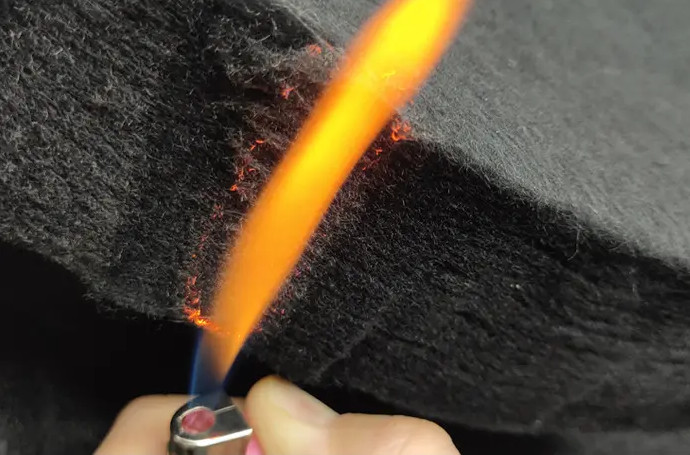Flame retardant fibers refer to high-temperature resistant fibers used in the textile industry, which can be categorized into natural flame retardant fibers and chemical flame retardant fibers.
Unlike regular fibers, the flame retardant fibers used in flame retardant fabrics possess excellent flame retardant properties, capable of preventing and delaying the spread of fire, as well as mitigating risks of burns and scalds.
Flame retardant fibers can be classified into two types:
One type is fibers that inherently possess certain flame retardant properties, such as aramid fibers, linen fibers, poly-m-phenylene isophthalamide fibers, and polyamide-imide fibers. These flame retardant fibers have been widely applied in various high-temperature and flame retardant work environments.
Related article:Which materials are naturally flame retardant in fabrics?
The other type involves modifying conventional fibers to obtain flame retardant properties, typically by adding flame retardant agents during fiber polymer spinning, hence they are also known as chemical flame retardant fibers.
Due to different fiber types, the use of different flame retardant agents, and variations in the bonding of flame retardant agents within the fibers, different types of flame retardant fibers are produced. Common flame retardant fibers include flame retardant polyester (blended), flame retardant acrylic (blended/co-polymer), flame retardant nylon (blended), flame retardant polypropylene (blended), and flame retardant viscose (blended).
Conventional fibers are widely used as general flame retardant materials due to their wide availability, large quantity, and low cost. The production methods for modifying conventional fibers to be flame retardant can be broadly categorized based on the different ways flame retardant agents bind to the macromolecules of the fibers:
- Co-polymerization method: Provides long-lasting flame retardant effects but involves complex processes and higher costs.
- Blending method: Also known as additive method, yields less durable flame retardancy compared to fibers produced using co-polymerization.
- Skin-core composite spinning method: Offers good fiber stability, high strength, and uniformity, but the equipment required is complex and expensive, resulting in higher costs.
Flame retardant fibers and textiles exhibit flame resistance, heat insulation, and resistance to melting, significantly improving their performance and safety compared to conventional fibers. They find wide applications in areas such as protective clothing, home furnishings, decorative items, industrial sectors, and military applications.



